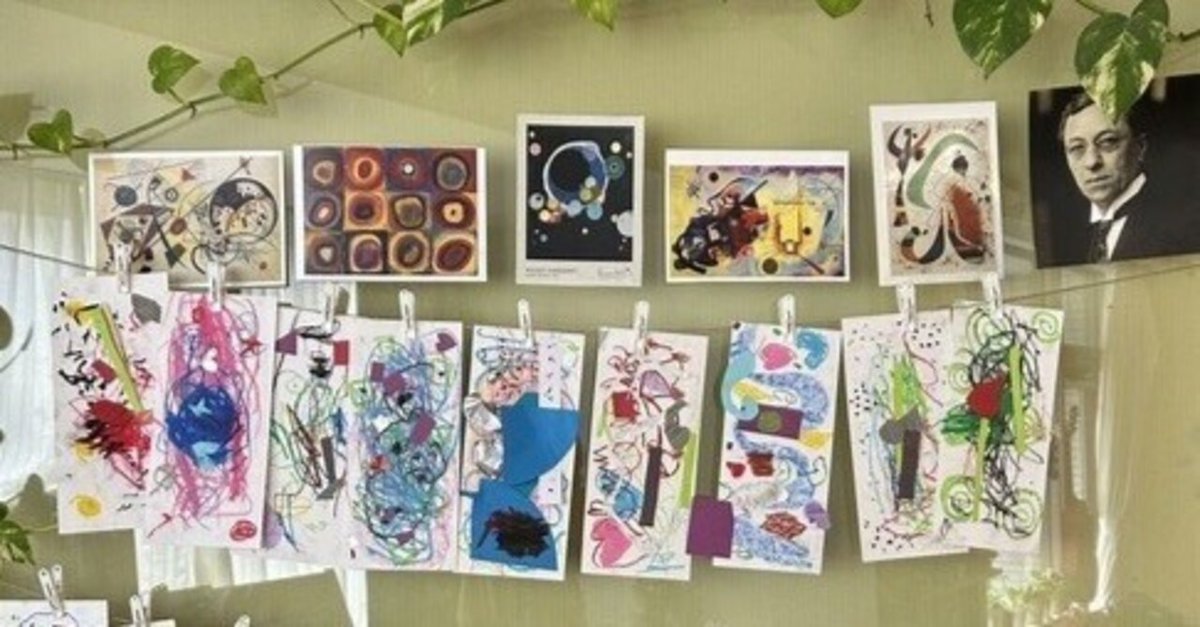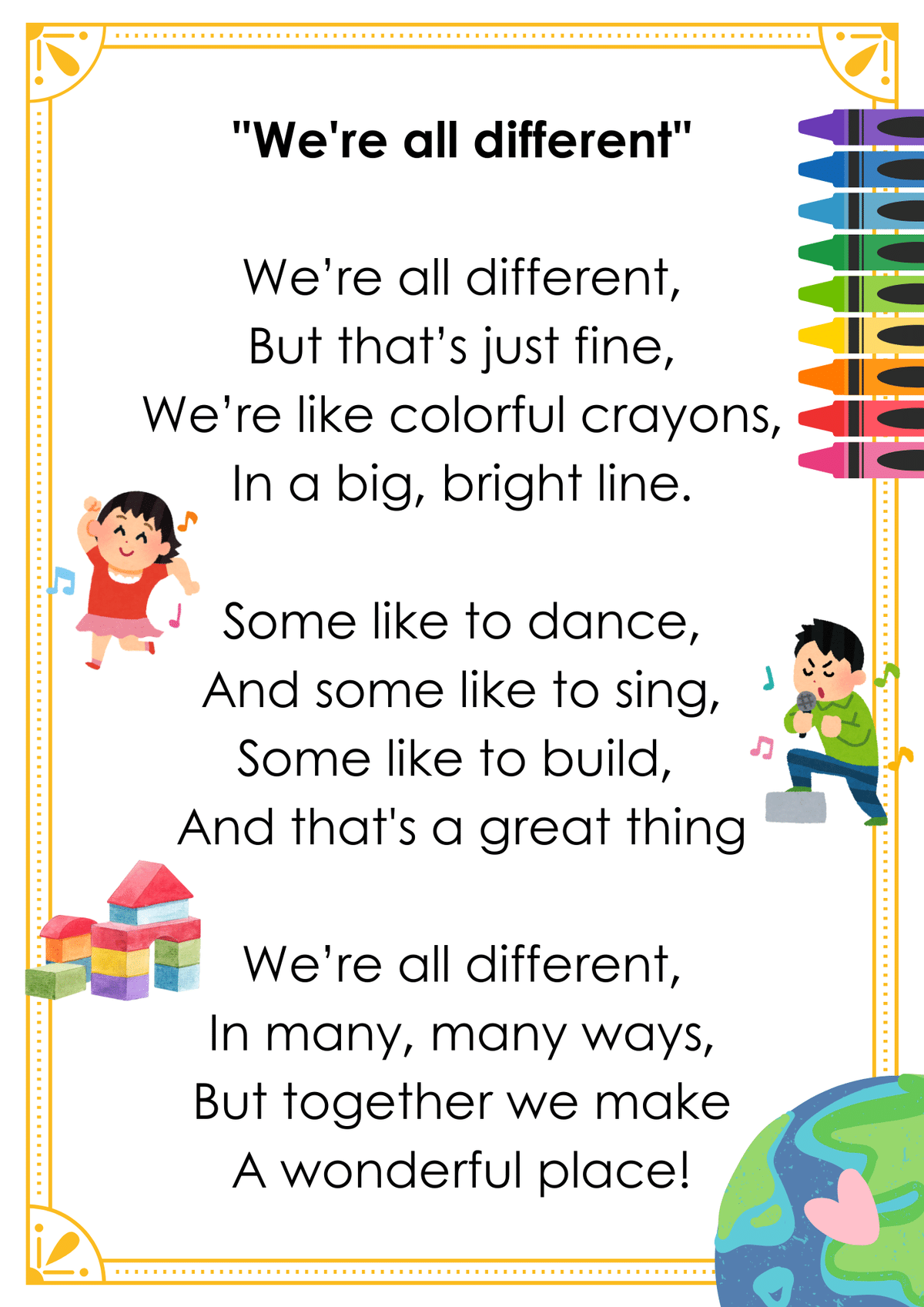
モンテッソーリの教室で育む 多様性と調和
モンテッソーリ教育者として、私たちは子どもたちを「未来の設計者」と捉えています。
子どもたちは、共感と理解に満ちた世界をつくり出す柔軟な心を持っています。
子どもたちが自然に差別せず、好奇心と開放的な態度で仲間に接する様子は、実に興味深いものです。
しかし、社会の複雑さに触れるにつれ、生まれ持った受容性が偏見や固定観念によって曇ることがあります。
そのため、私たちの教室では包括性と思いやりの環境を育むことを重視しています。
包括性(インクルージョン)とは、人種、性別、宗教、能力、文化などの多様性を認識し、受け入れる広範な概念です。子どもたち一人ひとりが、背景やアイデンティティに関係なく、価値があり受け入れられていると感じられる場所を作ることを目指しています。
オリンピックとパラリンピックから学ぶ
1学期末に夏季オリンピックについて取り上げたことを受け、今学期はパラリンピックのテーマから始めました。
障がいを持つアスリートたちの勇気と技術を探求し、誰もが称賛に値する個性的なな能力を持っていることを学びました。
これらの対話は、目に見える違いだけでなく、隠れた違いについても考える機会となりました。


芸術を通じた「違い」の理解
「We're All Different(私たちはみんな違う)」という詩を通じて、個性の美しさを学びました。
さらに、ワシリー・カンディンスキーの作品を紹介し、彼の共感覚が独特の芸術表現につながったことを話し合いました。
これにより、音楽と芸術のパターンの関係を体感し、子どもたちの創造性も刺激されました。
以前学んだ草間彌生の話題も再び取り上げられ、子どもたちは彼女の「違い」が芸術にどのような影響を与えたかを再認識しました。


日常生活における包括性
物語や短いビデオを通して、「人と違うこと」が原因で仲間はずれにされたと感じることが、子どもたちにどのような影響を与えるかを探ってきました。
その結果、目に見える違いと目に見えない違いについて、活発な会話が交わされたました。
公共交通機関の優先席のサインなど、身近なアクセシビリティシンボルについての話になると、子どもたちが日々の生活から、しっかりとそのマークの存在を認識していることは驚きでした。
会話はさらに続き、目に見える違いと目に見えない違いがあること、そしてすべての人に親切に接することの大切さを学びました。
これらの会話の本質は、特定の違いを強調することではなく、むしろそれらを当たり前のものとして子どもたちが受け入れていくことにあると考えます。
結びに
包括性(インクルージョン)についての学びは、広大で継続的なテーマです。
私たちの取り組みはその一部に過ぎませんが、子どもたちの間でより包括的な精神を育む重要な一歩となっています。
マリア・モンテッソーリの言葉「子どもは人類にとっての希望であり、約束です」を胸に、これらの経験を通じて、子どもたちがより包括的で思いやりのある世界を作る担い手となることを願っています。


Fostering Inclusivity in Our Montessori Classroom
As Montessori educators, we believe that children are the architects of the future—impressionable minds ready to shape a world filled with empathy and understanding. It’s fascinating to observe how children, by nature, are often non-discriminatory, approaching their peers with curiosity and openness. However, as they navigate the complexities of society, they may begin to form biases and opinions that can cloud their innate acceptance. This is why cultivating an environment of inclusivity and kindness is crucial in our classrooms.
Inclusivity is a broad concept that encompasses recognizing and embracing differences in race, gender, religion, abilities, culture, and more. It’s about creating a space where every child feels valued and accepted, regardless of their background or identity.
We ended last term with discussions on the Summer Olympics, so it felt only fitting to continue that conversation and start this term by talking about the Paralympics. We’ve explored how athletes with disabilities compete with immense courage and skill, demonstrating that everyone has unique abilities deserving of celebration. These discussions opened the door to our exploration of differences—not just those that are visible, like hair or skin color, but also those that may be hidden.
We've been learning a beautiful poem titled "We're All Different," which emphasizes the beauty of our unique qualities. To complement this, we studied the works of Wassily Kandinsky, discussing how his synesthesia, once a source of feeling "different," became the foundation for his extraordinary art. This provided us with an opportunity to examine the relationship between music and art patterns, resulting in some extraordinary creations of our own!
Interestingly, the previous artist whose life and work we delved into was Yayoi Kusama, whose art was also inspired by her differences—how, as a child, she could see or hear things that weren’t there, like flowers or pumpkins talking to her. While I thought the chapter on Yayoi Kusama had closed in our classroom, I love how she has made a comeback in our discussions. The children are celebrating her differences and recognizing their impact on her art.
Through stories and short videos, we've explored how feeling left out due to differences can affect children. This led to enlightening conversations about both visible and invisible differences. We observed how quickly the children recognized symbols of accessibility, such as reserved seating signs on public transport. This awareness opened up discussions about extending kindness to everyone, regardless of whether their differences are apparent. The essence of these discussions is not to highlight any specific differences, but rather to normalize them.
Inclusivity is a vast and ongoing conversation that extends far beyond what we've explored in our classroom. We've only touched on a small part of this important topic, but every discussion is a step toward fostering a more inclusive spirit among our children. As we continue this journey of inclusivity, I’m reminded of Maria Montessori's words: "The child is both a hope and a promise for mankind." Through these experiences, our children are indeed becoming the promise of a more inclusive, understanding, and compassionate world.
この記事が気に入ったらサポートをしてみませんか?
